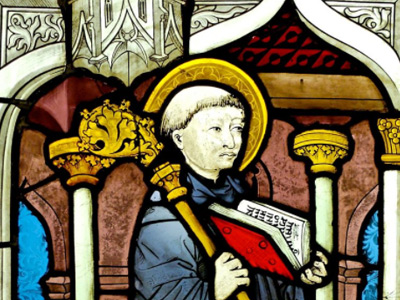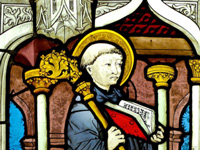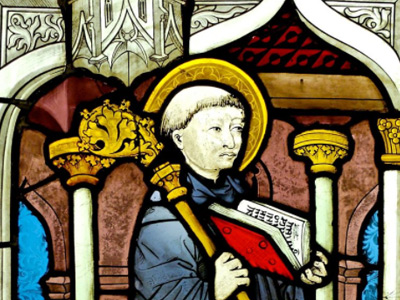Second Crusade (1147–1149)

Wendish Crusade
When the Second Crusade was called, many south Germans volunteered to crusade in the Holy Land. The north German Saxons were reluctant. They told St Bernard of their desire to campaign against pagan Slavs at an Imperial Diet meeting in Frankfurt on 13 March 1147. Approving of the Saxons' plan, Eugenius issued a papal bull known as the Divina dispensatione on 13 April. This bull stated that there was to be no difference between the spiritual rewards of the different crusaders. Those who volunteered to crusade against the pagan Slavs were primarily Danes, Saxons and Poles, although there were also some Bohemians. The Papal legate, Anselm of Havelberg, was placed in overall command. The campaign itself was led by Saxon families such as the Ascanians, Wettin and Schauenburgers.
Upset by German participation in the crusade, the Obotrites preemptively invaded Wagria in Holstein in June 1147, leading to the march of the crusaders in late summer 1147. After expelling the Obodrites from Christian territory, the crusaders targeted the Obodrite fort at Dobin and the Liutizian fort at Demmin. The forces attacking Dobin included those of the Danes Canute V and Sweyn III, Adalbert II, Archbishop of Bremen and Duke Henry the Lion of Saxony. When some crusaders advocated ravaging the countryside, others objected by asking, "Is not the land we are devastating our land, and the people we are fighting our people?" The Saxon army under Henry the Lion withdrew after the pagan chief, Niklot, agreed to have Dobin's garrison undergo baptism.
After an unsuccessful siege of Demmin, a contingent of crusaders was diverted by the margraves to attack Pomerania instead. They reached the already Christian city Stettin, whereupon the crusaders dispersed after meeting with Bishop Adalbert of Pomerania and Prince Ratibor I of Pomerania. According to Bernard of Clairvaux, the goal of the crusade was to battle the pagan Slavs "until such a time as, by God's help, they shall either be converted or deleted".
However, the crusade failed to achieve the conversion of most of the Wends. The Saxons achieved largely token conversions at Dobin, as the Slavs resorted to their pagan beliefs once the Christian armies dispersed. Albert of Pomerania explained, "If they had come to strengthen the Christian faith ... they should do so by preaching, not by arms".
By the end of the crusade, the countryside of Mecklenburg and Pomerania was plundered and depopulated with much bloodshed, especially by the troops of Henry the Lion. This was to help bring about more Christian victories in the future decades. The Slavic inhabitants also lost much of their methods of production, limiting their resistance in the future.
HISTORY

RESOURCES
This article uses material from the Wikipedia article "Second Crusade (1147–1149)", which is released under the Creative Commons Attribution-Share-Alike License 3.0.
© Stories Preschool. All Rights Reserved.






